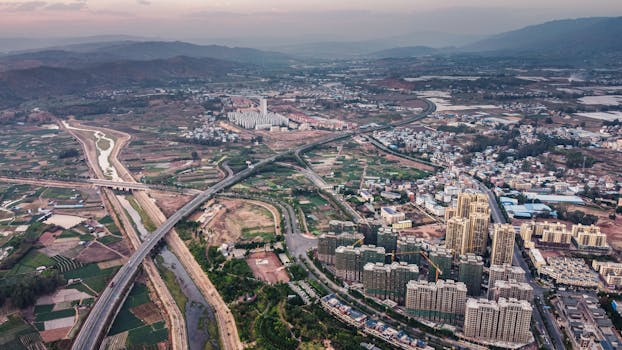Mapping the Fiber Landscape: Key Players and Projects Across Africa
The African continent is experiencing a significant surge in fiber optic infrastructure development, with various key players and projects emerging across the region. This article maps the fiber landscape in Africa, highlighting the major players, projects, and initiatives driving this growth.

Mapping the Fiber Landscape: Key Players and Projects Across Africa
The African continent is experiencing a significant surge in fiber optic infrastructure development, with various key players and projects emerging across the region. Mapping the fiber landscape in Africa is crucial for understanding the current state of telecommunications infrastructure and identifying opportunities for growth and investment. In this article, we will delve into the world of fiber optics in Africa, exploring the major players, projects, and initiatives driving this growth.
Mapping the fiber landscape in Africa is a complex task, as it involves tracking the development of fiber optic infrastructure across 54 countries, each with its unique landscape, population, and economic conditions. However, some key players have emerged as major drivers of this growth, including telecommunications companies, governments, and international organizations. These players are investing heavily in fiber optic infrastructure, recognizing its potential to drive economic growth, improve connectivity, and enhance the quality of life for millions of Africans.
Fiber Optic Infrastructure Development in Africa
Fiber optic infrastructure development in Africa has been gaining momentum over the past decade, with significant investments in terrestrial and submarine fiber optic cables. These investments have been driven by the growing demand for high-speed internet and data services, particularly in urban areas. According to a report by the International Telecommunication Union (ITU), the number of fiber optic subscribers in Africa increased from 1.3 million in 2010 to 13.4 million in 2020, representing a compound annual growth rate (CAGR) of 25%.
One of the most significant fiber optic infrastructure projects in Africa is the African Coast to Europe (ACE) submarine cable, which spans over 17,000 kilometers and connects 24 countries in West and Central Africa to Europe. The ACE cable has a design capacity of 5.12 terabits per second and has been instrumental in providing high-speed internet and data services to millions of people in the region.
Key Players in the African Fiber Optic Market
Several key players have emerged in the African fiber optic market, including telecommunications companies, governments, and international organizations. Some of the major players include:
MTN Group, a leading telecommunications company in Africa, has been investing heavily in fiber optic infrastructure across the continent. The company has deployed over 100,000 kilometers of fiber optic cables in countries such as South Africa, Nigeria, and Ghana, providing high-speed internet and data services to millions of customers.
Orange Group, another major telecommunications company, has also been investing in fiber optic infrastructure in Africa. The company has deployed over 40,000 kilometers of fiber optic cables in countries such as Egypt, Morocco, and Senegal, providing high-speed internet and data services to millions of customers.
The African Development Bank (AfDB) has also been playing a crucial role in promoting fiber optic infrastructure development in Africa. The bank has provided financing for several fiber optic infrastructure projects, including the ACE submarine cable, and has been working with governments and private sector companies to promote the development of fiber optic infrastructure across the continent.
Challenges and Opportunities in the African Fiber Optic Market
Despite the significant progress made in fiber optic infrastructure development in Africa, several challenges remain. One of the major challenges is the lack of infrastructure in rural areas, where millions of people still lack access to basic telecommunications services. According to the ITU, the rural-urban divide in Africa remains significant, with only 10% of rural populations having access to 4G mobile broadband services.
Another challenge facing the African fiber optic market is the high cost of infrastructure development. Deploying fiber optic cables in Africa can be expensive, particularly in rural areas where the cost of infrastructure development can be prohibitively high. However, several initiatives have been launched to address this challenge, including the use of alternative technologies such as satellite and wireless broadband.
Despite these challenges, the African fiber optic market presents several opportunities for growth and investment. The growing demand for high-speed internet and data services, particularly in urban areas, is driving the need for fiber optic infrastructure development. Additionally, the African Continental Free Trade Area (AfCFTA) agreement, which was launched in 2020, is expected to drive economic growth and increase trade across the continent, further increasing the demand for fiber optic infrastructure.
Conclusion
In conclusion, mapping the fiber landscape in Africa is a complex task, but it is clear that the continent is experiencing a significant surge in fiber optic infrastructure development. Key players, including telecommunications companies, governments, and international organizations, are investing heavily in fiber optic infrastructure, recognizing its potential to drive economic growth, improve connectivity, and enhance the quality of life for millions of Africans. While challenges remain, the African fiber optic market presents several opportunities for growth and investment, particularly in rural areas where millions of people still lack access to basic telecommunications services.



